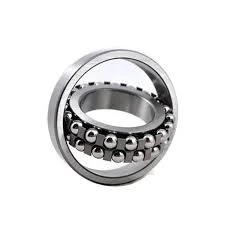
Dhj . 28, 2024 17:37 Back to list
what is angular contact bearing
Understanding Angular Contact Bearings
Angular contact bearings are a critical component in various mechanical systems, particularly in applications that require precise alignment and load handling capabilities. These specialized bearings are designed to support combined loads, consisting of both radial and axial forces. This article will delve into the definition, structure, functionality, and applications of angular contact bearings.
Definition and Structure
An angular contact bearing is a type of rolling bearing that is designed to accommodate higher speeds and loads through a unique arrangement of its components. Unlike radial bearings, which primarily carry radial loads, angular contact bearings are designed to handle loads acting at an angle to the axis of the shaft. They consist of an inner race, outer race, rolling elements (usually balls or rollers), and a cage that holds the rolling elements in place.
The most distinctive feature of angular contact bearings is their raceways, which are machined at an angle relative to the bearing axis. This angling allows the bearing to bear both radial and axial loads in one direction. The angle of contact can vary, leading to different types of angular contact bearings characterized by their contact angles, such as 15°, 25°, or 40°, depending on the application's load requirements.
Functionality
Angular contact bearings function by distributing the load across the rolling elements when forces are applied. When subjected to axial loads, such bearings exhibit superior performance due to their geometry, which allows for an efficient transfer of load. The contact angle plays a crucial role in determining the bearing’s load capacity and its ability to support axial loads. Increased contact angles enhance axial load-carrying capacity but may reduce the bearing's ability to handle radial loads.
what is angular contact bearing

These bearings can be arranged in various configurations, including back-to-back, face-to-face, or various combinations to manage loads in multiple directions. By carefully selecting the arrangement and type of angular contact bearings, engineers can tailor a bearing system to suit specific operational requirements, enhancing performance and reliability.
Applications
The applications of angular contact bearings span several industries, including automotive, aerospace, machine tool, and robotics. In the automotive sector, they are often used in wheel hubs, gearboxes, and electric motors. Their ability to manage both axial and radial loads makes them ideal for the dynamic conditions present in these environments.
In aerospace applications, angular contact bearings are critical for components such as aircraft landing gear and engine parts, where precise load management and minimal friction are paramount for safety and performance. The machine tool industry also relies heavily on these bearings, as they support machining spindles that operate at high speeds and require strict precision.
Conclusion
Angular contact bearings are vital to the efficient functioning of numerous mechanical systems. Their unique design allows them to support complex loading scenarios that other bearing types cannot, making them indispensable in high-performance environments. As industries continue to evolve, the demand for specialized bearings like angular contact types will likely grow, leading to advancements in their design and materials. Understanding these bearings is essential for engineers and technicians who strive for precision and reliability in their mechanical systems.
Latest news
-
Common Failures in Thrust Ball Bearings and Solutions
NewsAug.22,2025
-
How Tapered Roller Bearings Can Take Shock Loads
NewsAug.22,2025
-
Angular Bearings in High-Precision Spindles
NewsAug.22,2025
-
The Impact of Misalignment on Cylindrical Roller Bearing Performance
NewsAug.22,2025
-
The Role of Cage Design in Deep Groove Ball Bearing Durability
NewsAug.22,2025
-
The Impact of Material Quality on Machinery Bearings’ Lifespan
NewsAug.22,2025
